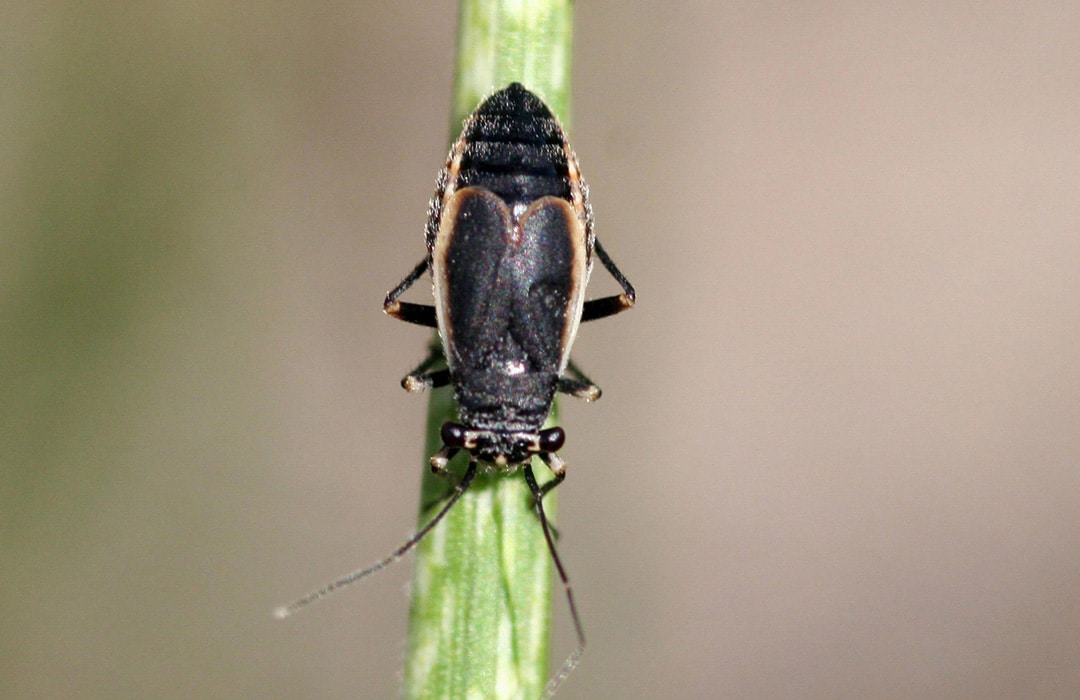Montana State University has received several reports of black grass bug moving from pasture/crested wheat grass to neighboring winter wheat. The stippling damage on crested wheatgrass and other grasses is feeding damage caused by black grass bugs.
There are several species responsible, but in Montana the most common culprits are Labops hesperius and Irbisia spp. This is an early-season pest, and there is only one generation per year.

Black grass bug can be a serious early-season pest of grasses, particularly introduced wheatgrasses like crested wheat. Black grass bugs feed through straw-like mouthparts on plant sap. Affected acreage appears silvery and dried out and can be severely stunted. Heavy feeding reduces yield, plant height / seedhead production, and forage protein. This damage has been observed this spring along the edges of winter wheat fields that border grass fields with high populations if black grass bug.
There are no established economic treatment thresholds for black grass bugs. Populations can exceed 1,000 bugs/ft2 when infestation is severe. Insecticidal control in forage grasses is usually not economically feasible, but summer grazing and late season burning of dead grasses may suppress egg hatch next spring, perhaps reducing future need for chemical control.
For more information: Black Grass Bugs – 5.575 – Extension (colostate.edu)


